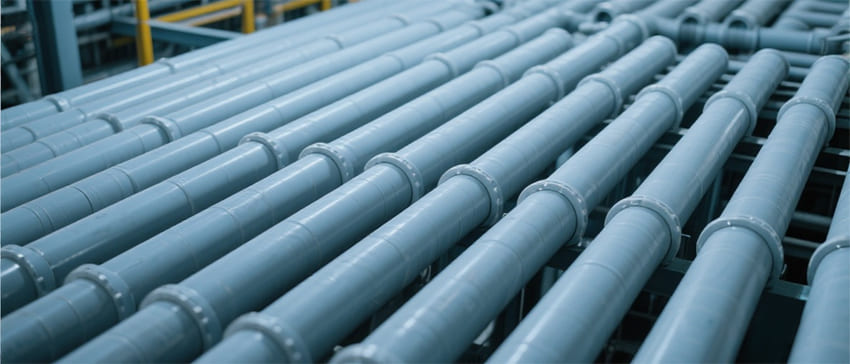Mit der raschen Verstädterung und dem Ausbau der Infrastruktur nimmt die Verwendung von Kunststoff-, Verbund- und Metallrohren in der Wasserversorgung, Gasversorgung, Kommunikation und Industrie stark zu. PVC-, PE- und PP-Rohre, die für ihre Korrosionsbeständigkeit, ihr geringes Gewicht und ihre niedrigen Kosten geschätzt werden, werden weltweit zunehmend eingesetzt.
Die sperrigen Kunststoffhohlkörper landen jedoch häufig auf Halden oder Deponien, was die Umweltbelastung und die Verschmutzung durch Kunststoffe weiter erhöht. Bei der Zerkleinerung als erstem Recyclingschritt werden Rohre mit großem Durchmesser in handliche Stücke für die nachfolgende Verarbeitung zerlegt. Die Forschung bestätigt, dass recycelte Kunststoffabfälle den Energieverbrauch und die Treibhausgasemissionen erheblich senken und so die globalen Nachhaltigkeitsziele fördern.
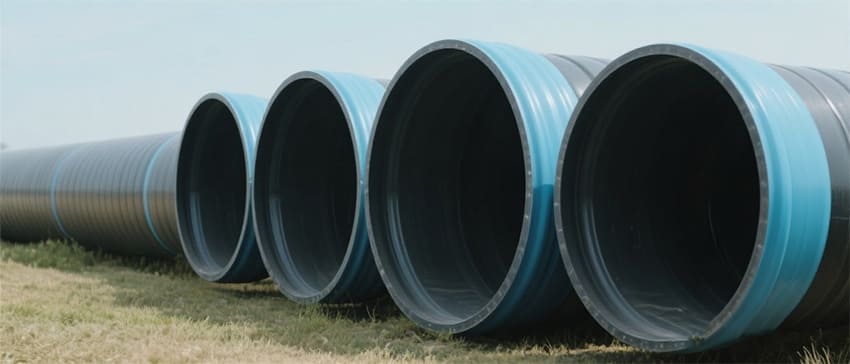
Wachstum von Abwasserrohren weltweit
Der Anstieg der Abfallrohre ist eng mit der weltweiten Kunststoffproduktion und dem Verbrauch verbunden. Der Markt für Kunststoffrohre wurde 2023 auf 56,55 Mrd. USD geschätzt und wird bis 2030 voraussichtlich 89,57 Mrd. USD erreichen (CAGR 6,8%), was auf eine starke Nachfrage, aber auch auf zunehmenden Abfall zurückzuführen ist.
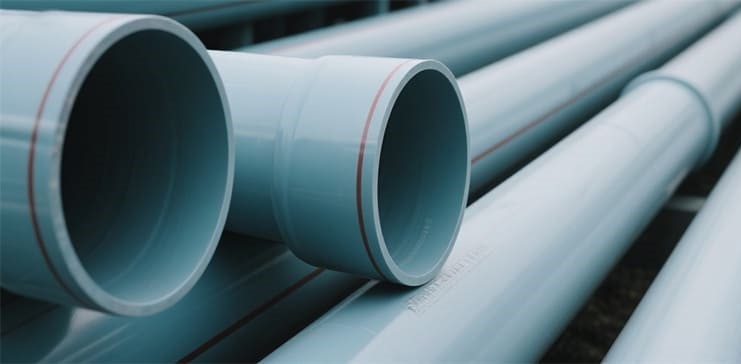
- Jährlich fallen rund 350 Millionen Tonnen Kunststoffabfälle an, wobei 5-12% auf Rohre entfallen, die hauptsächlich aus dem Abriss von Gebäuden, der Landwirtschaft und der industriellen Erneuerung stammen.
- In Entwicklungsregionen wie Asien und Afrika wächst der Rohrabfall jährlich um 6-8%, was auf den Ausbau der Infrastruktur zurückzuführen ist.
- In den USA schätzt die EPA, dass 20-30% der städtischen Rohrleitungen innerhalb von 20 Jahren ausgetauscht werden müssen, was eine erhebliche Abfallmenge bedeutet.
- Die OECD geht davon aus, dass sich die weltweiten Kunststoffabfälle bis 2060 verdoppeln werden, wobei die Abfälle aus Rohren aufgrund ihrer Langlebigkeit und ihres Volumens schneller ansteigen.
Dieser Trend verschärft die globalen Herausforderungen der Abfallwirtschaft und zwingt die Regierungen, ihre Recyclingpolitik zu verschärfen, wie z. B. die EU-Kunststoffstrategie, die bis 2030 eine Recyclingquote von 55% anstrebt.
Herausforderungen und technische Hürden beim Recycling von Altrohren
Recycling von Altrohren steht vor großen Hürden
- Umweltbelastung: Jährlich gelangen etwa 0,5% Kunststoff in die Ozeane, und Rohre tragen zu 20-30% Bauabfällen bei.
- Die Deponierung verbraucht Platz und widersteht dem Abbau, während bei der Verbrennung Dioxine freigesetzt werden und sich die Klimaauswirkungen verschlechtern.
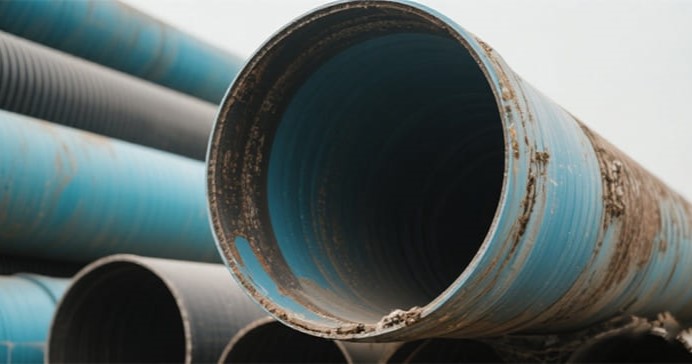
Technische Engpässe
- Rohre haben oft einen Durchmesser von 200-1600 mm und sind damit zu starr für Standard-Shredder. Viele bestehen aus mehrschichtigen Verbundstoffen (PE, EVOH usw.), was die Sortierung erschwert und die Qualität des Recyclats mindert. Ihr hohles Design führt zu Rückprall und Schlupf, was den Verschleiß der Anlagen beschleunigt.
- Verunreinigungen durch Lebensmittelrückstände und Chemikalien erhöhen den Reinigungsbedarf.
- Lücken in der Infrastruktur und ein Mangel an Fachkräften, insbesondere in Entwicklungsländern, behindern das Recycling zusätzlich.
- Die hohen Kosten und der hohe Energieverbrauch in Verbindung mit der schwankenden Nachfrage nach recycelten Kunststoffen sind nach wie vor große Hindernisse.
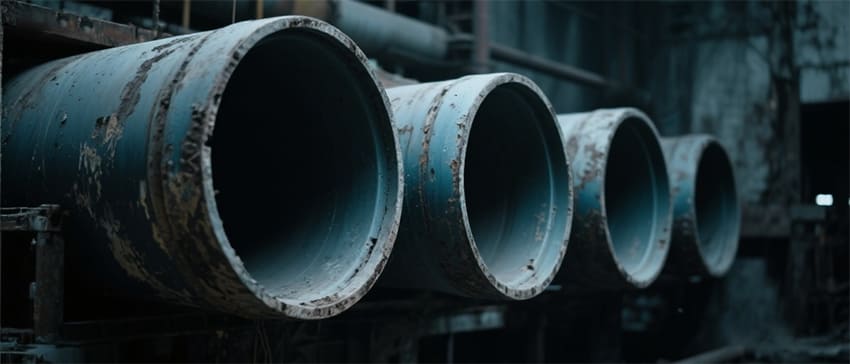
Lösungen für das Zerkleinern von Rohren und Konfiguration der Ausrüstung
Stromlinie Eco Tech Rohrschredder für die Primärzerkleinerung von Hohlkörpern mit großem Durchmesser (200-1000mm, >10m Länge) verarbeitet PE/PVC/PP/PET ohne Vorschneiden. Hohe Jahreskapazität.
Konfiguration der Tasten
Modernes Antriebssystem, Hochleistungsmotoren, hochwertige Getriebe, hydraulische Beschickung, Hebevorrichtung und Sicherheitstür, die die Effizienz und Sicherheit erhöhen.
- Motorleistung: 33×2-45×2 kW
- Durchmesser des Schneidwerkzeugs: 800 / 1000 / 1200 mm
Zusätzliche Konfigurationen
Diese Zusatzgeräte lassen sich mit Zerkleinerungsmaschinen zu automatisierten Linien verbinden und machen ~30% der gesamten Ausrüstungskosten aus, was den Recyclingwert der Anlagen erhöht.
- Entwässerungseinheit: >98% Wirkungsgrad
- FördersystemAutomatische Fütterung, geringeres Arbeitsrisiko
- Magnet-/Luftabscheider: entfernt metallische und nichtmetallische Fragmente
- Waschanlage: reinigt Sand und Öl und verbessert die Reinheit der Pellets

Anwendungen von geschredderten Rohrfragmenten
- Regranulierung: Herstellung von recycelten Rohren, Formstücken und drucklosen Produkten.
- Bauwesen: Ersetzt Sand/Zuschlag in Beton, WPC, Dämmplatten oder Terrassendielen.
- EnergierückgewinnungPyrolyse zu Heizöl/Gas; Studien zeigen, dass PE/PVC-Mischungen hochkalorisches Öl ergeben.
Die Zahl der Abfallrohre steigt rapide an. Rohrzerkleinerer bieten praktische Lösungen für die Zerkleinerung, Sortierung und Wiederverwendung. Dennoch gibt es noch Herausforderungen bei der Energieeffizienz, der Trennung von Verbundstoffen und der Qualität des Recyclats. Die künftige Integration von intelligenten Überwachungs- und Kreislaufsystemen wird eine effizientere und nachhaltigere Recyclingkette ermöglichen.
